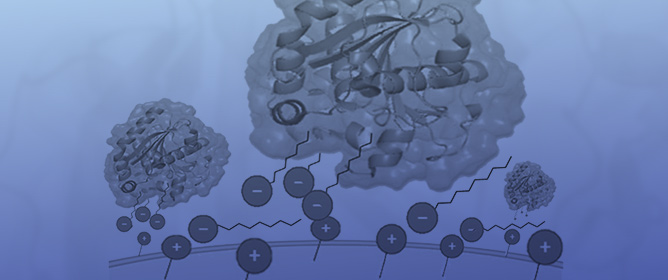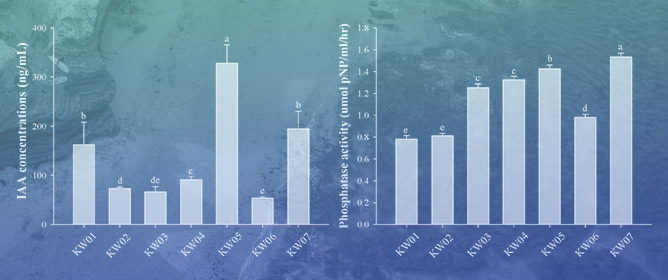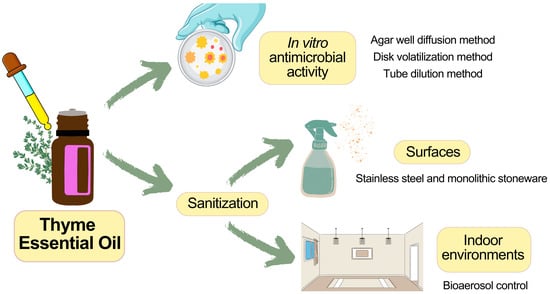Journal Description
BioTech
BioTech
- formerly High-Throughput - is an international, peer-reviewed, open access journal on biotechnology, published quarterly online by MDPI.
- Open Access— free for readers, with article processing charges (APC) paid by authors or their institutions.
- High Visibility: indexed within ESCI (Web of Science), Scopus, PubMed, PMC, Inspec, CAPlus / SciFinder, and other databases.
- Journal Rank: CiteScore - Q2 (Biotechnology)
- Rapid Publication: manuscripts are peer-reviewed and a first decision is provided to authors approximately 19.6 days after submission; acceptance to publication is undertaken in 6.8 days (median values for papers published in this journal in the second half of 2023).
- Recognition of Reviewers: reviewers who provide timely, thorough peer-review reports receive vouchers entitling them to a discount on the APC of their next publication in any MDPI journal, in appreciation of the work done.
Latest Articles
Eco-Friendly Sanitization of Indoor Environments: Effectiveness of Thyme Essential Oil in Controlling Bioaerosol Levels and Disinfecting Surfaces
BioTech 2024, 13(2), 12; https://doi.org/10.3390/biotech13020012 - 26 Apr 2024
Abstract
Bioaerosols and pathogens in indoor workplaces and residential environments are the primary culprits of several infections. Techniques for sanitizing air and surfaces typically involve the use of UV rays or chemical sanitizers, which may release chemical residues harmful to human health. Essential oils,
[...] Read more.
Bioaerosols and pathogens in indoor workplaces and residential environments are the primary culprits of several infections. Techniques for sanitizing air and surfaces typically involve the use of UV rays or chemical sanitizers, which may release chemical residues harmful to human health. Essential oils, natural substances derived from plants, which exhibit broad antimicrobial properties, could be a viable alternative for air and surface sanitation. The objective of this study has been to investigate the efficacy of thyme essential oil (TEO) in environmental sanitation processes. In Vitro assays through agar well diffusion, disk volatilization and tube dilution methods revealed significant antimicrobial activity of TEO 100% against foodborne and environmental isolates, with both bacteriostatic/fungistatic and bactericidal/fungicidal effects. Therefore, aqueous solutions of TEO 2.5% and 5% were formulated for air sanitation through nebulization and surface disinfection via direct contact. Bioaerosol samples and surface swabs were analyzed before and after sanitation, demonstrating the efficacy of aqueous solutions of TEO in reducing mesophilic and psychrophilic bacteria and environmental fungi levels in both air and on surfaces. The obtained results prove the antimicrobial potential of aqueous solutions of TEO in improving indoor air quality and surface cleanliness, suggesting thyme essential oil as an effective and safe natural sanitizer with minimal environmental impact compared to dangerous chemical disinfectants.
Full article
(This article belongs to the Section Environmental Biotechnology)
►
Show Figures
Open AccessArticle
Development of the 12-Base Short Dimeric Myogenetic Oligodeoxynucleotide That Induces Myogenic Differentiation
by
Koji Umezawa, Rena Ikeda, Taiichi Sakamoto, Yuya Enomoto, Yuma Nihashi, Sayaka Shinji, Takeshi Shimosato, Hiroshi Kagami and Tomohide Takaya
BioTech 2024, 13(2), 11; https://doi.org/10.3390/biotech13020011 - 25 Apr 2024
Abstract
►▼
Show Figures
A myogenetic oligodeoxynucleotide (myoDN), iSN04 (5′-AGA TTA GGG TGA GGG TGA-3′), is a single-stranded 18-base telomeric DNA that serves as an anti-nucleolin aptamer and induces myogenic differentiation, which is expected to be a nucleic acid drug for the prevention of disease-associated muscle wasting.
[...] Read more.
A myogenetic oligodeoxynucleotide (myoDN), iSN04 (5′-AGA TTA GGG TGA GGG TGA-3′), is a single-stranded 18-base telomeric DNA that serves as an anti-nucleolin aptamer and induces myogenic differentiation, which is expected to be a nucleic acid drug for the prevention of disease-associated muscle wasting. To improve the drug efficacy and synthesis cost of myoDN, shortening the sequence while maintaining its structure-based function is a major challenge. Here, we report the novel 12-base non-telomeric myoDN, iMyo01 (5′-TTG GGT GGG GAA-3′), which has comparable myogenic activity to iSN04. iMyo01 as well as iSN04 promoted myotube formation of primary-cultured human myoblasts with upregulation of myogenic gene expression. Both iMyo01 and iSN04 interacted with nucleolin, but iMyo01 did not bind to berberine, the isoquinoline alkaloid that stabilizes iSN04. Nuclear magnetic resonance revealed that iMyo01 forms a G-quadruplex structure despite its short sequence. Native polyacrylamide gel electrophoresis and a computational molecular dynamics simulation indicated that iMyo01 forms a homodimer to generate a G-quadruplex. These results provide new insights into the aptamer truncation technology that preserves aptamer conformation and bioactivity for the development of efficient nucleic acid drugs.
Full article
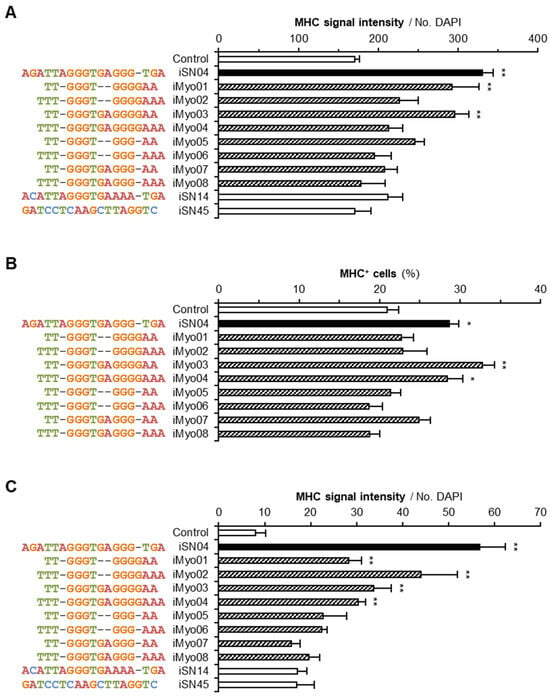
Figure 1
Open AccessArticle
Transcriptional and Metabolic Response of a Strain of Escherichia coli PTS− to a Perturbation of the Energetic Level by Modification of [ATP]/[ADP] Ratio
by
Sandra Soria, Ofelia E. Carreón-Rodríguez, Ramón de Anda, Noemí Flores, Adelfo Escalante and Francisco Bolívar
BioTech 2024, 13(2), 10; https://doi.org/10.3390/biotech13020010 - 10 Apr 2024
Abstract
►▼
Show Figures
The intracellular [ATP]/[ADP] ratio is crucial for Escherichia coli’s cellular functions, impacting transport, phosphorylation, signaling, and stress responses. Overexpression of F1-ATPase genes in E. coli increases glucose consumption, lowers energy levels, and triggers transcriptional responses in central carbon metabolism genes,
[...] Read more.
The intracellular [ATP]/[ADP] ratio is crucial for Escherichia coli’s cellular functions, impacting transport, phosphorylation, signaling, and stress responses. Overexpression of F1-ATPase genes in E. coli increases glucose consumption, lowers energy levels, and triggers transcriptional responses in central carbon metabolism genes, particularly glycolytic ones, enhancing carbon flux. In this contribution, we report the impact of the perturbation of the energetic level in a PTS− mutant of E. coli by modifying the [ATP]/[ADP] ratio by uncoupling the cytoplasmic activity of the F1 subunit of the ATP synthase. The disruption of [ATP]/[ADP] ratio in the evolved strain of E. coli PB12 (PTS−) was achieved by the expression of the atpAGD operon encoding the soluble portion of ATP synthase F1-ATPase (strain PB12AGD+). The analysis of the physiological and metabolic response of the PTS− strain to the ATP disruption was determined using RT–qPCR of 96 genes involved in glucose and acetate transport, glycolysis and gluconeogenesis, pentose phosphate pathway (PPP), TCA cycle and glyoxylate shunt, several anaplerotic, respiratory chain, and fermentative pathways genes, sigma factors, and global regulators. The apt mutant exhibited reduced growth despite increased glucose transport due to decreased energy levels. It heightened stress response capabilities under glucose-induced energetic starvation, suggesting that the carbon flux from glycolysis is distributed toward the pentose phosphate and the Entner–Duodoroff pathway with the concomitant. Increase acetate transport, production, and utilization in response to the reduction in the [ATP]/[ADP] ratio. Upregulation of several genes encoding the TCA cycle and the glyoxylate shunt as several respiratory genes indicates increased respiratory capabilities, coupled possibly with increased availability of electron donor compounds from the TCA cycle, as this mutant increased respiratory capability by 240% more than in the PB12. The reduction in the intracellular concentration of cAMP in the atp mutant resulted in a reduced number of upregulated genes compared to PB12, suggesting that the mutant remains a robust genetic background despite the severe disruption in its energetic level.
Full article
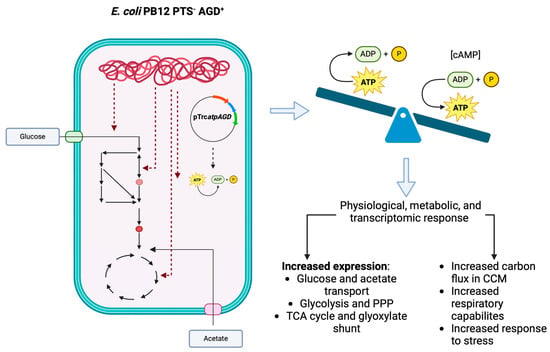
Graphical abstract
Open AccessReview
Synthesis and Biological Activities of Some Metal Complexes of Peptides: A Review
by
Petja Marinova and Kristina Tamahkyarova
BioTech 2024, 13(2), 9; https://doi.org/10.3390/biotech13020009 - 08 Apr 2024
Abstract
Peptides, both natural and synthetic, are well suited for a wide range of purposes and offer versatile applications in different fields such as biocatalysts, injectable hydrogels, tumor treatment, and drug delivery. The research of the better part of the cited papers was conducted
[...] Read more.
Peptides, both natural and synthetic, are well suited for a wide range of purposes and offer versatile applications in different fields such as biocatalysts, injectable hydrogels, tumor treatment, and drug delivery. The research of the better part of the cited papers was conducted using various database platforms such as MetalPDB. The rising prominence of therapeutic peptides encompasses anticancer, antiviral, antimicrobial, and anti-neurodegenerative properties. The metals Na, K, Mg, Ca, Fe, Mn, Co, Cu, Zn, and Mo are ten of the twenty elements that are considered essential for life. Crucial for understanding the biological role of metals is the exploration of metal-bound proteins and peptides. Aside from essential metals, there are other non-essential metals that also interact biologically, exhibiting either therapeutic or toxic effects. Irregularities in metal binding contribute to diseases like Alzheimer’s, neurodegenerative disorders, Wilson’s, and Menkes disease. Certain metal complexes have potential applications as radiopharmaceuticals. The examination of these complexes was achieved by preforming UV–Vis, IR, EPR, NMR spectroscopy, and X-ray analysis. This summary, although unable to cover all of the studies in the field, offers a review of the ongoing experimentation and is a basis for new ideas, as well as strategies to explore and gain knowledge from the extensive realm of peptide-chelated metals and biotechnologies.
Full article
(This article belongs to the Section Medical Biotechnology)
►▼
Show Figures
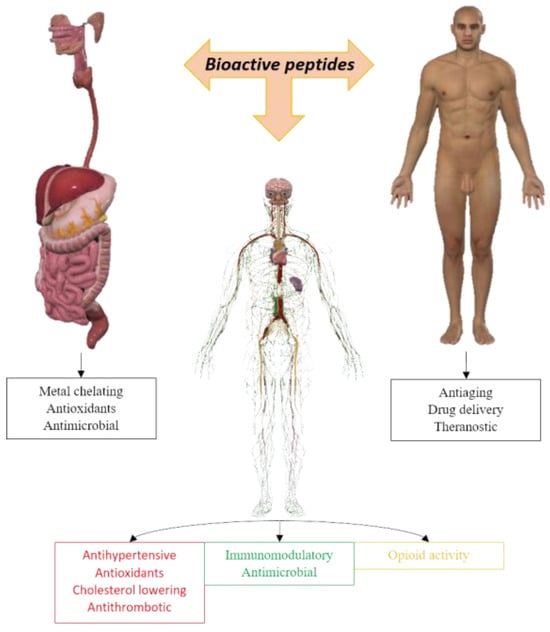
Figure 1
Open AccessArticle
Novel Pseudomonas Species Prevent the Growth of the Phytopathogenic Fungus Aspergillus flavus
by
Franciene Rabiço, Tiago Cabral Borelli, Robson Carlos Alnoch, Maria de Lourdes Teixeira de Moraes Polizeli, Ricardo R. da Silva, Rafael Silva-Rocha and María-Eugenia Guazzaroni
BioTech 2024, 13(2), 8; https://doi.org/10.3390/biotech13020008 - 30 Mar 2024
Abstract
In response to the escalating demand for sustainable agricultural methodologies, the utilization of microbial volatile organic compounds (VOCs) as antagonists against phytopathogens has emerged as a viable eco-friendly alternative. Microbial volatiles exhibit rapid diffusion rates, facilitating prompt chemical interactions. Moreover, microorganisms possess the
[...] Read more.
In response to the escalating demand for sustainable agricultural methodologies, the utilization of microbial volatile organic compounds (VOCs) as antagonists against phytopathogens has emerged as a viable eco-friendly alternative. Microbial volatiles exhibit rapid diffusion rates, facilitating prompt chemical interactions. Moreover, microorganisms possess the capacity to emit volatiles constitutively, as well as in response to biological interactions and environmental stimuli. In addition to volatile compounds, these bacteria demonstrate the ability to produce soluble metabolites with antifungal properties, such as APE Vf, pyoverdin, and fragin. In this study, we identified two Pseudomonas strains (BJa3 and MCal1) capable of inhibiting the in vitro mycelial growth of the phytopathogenic fungus Aspergillus flavus, which serves as the causal agent of diseases in sugarcane and maize. Utilizing GC/MS analysis, we detected 47 distinct VOCs which were produced by these bacterial strains. Notably, certain volatile compounds, including 1-heptoxydecane and tridecan-2-one, emerged as primary candidates for inhibiting fungal growth. These compounds belong to essential chemical classes previously documented for their antifungal activity, while others represent novel molecules. Furthermore, examination via confocal microscopy unveiled significant morphological alterations, particularly in the cell wall, of mycelia exposed to VOCs emitted by both Pseudomonas species. These findings underscore the potential of the identified BJa3 and MCal1 Pseudomonas strains as promising agents for fungal biocontrol in agricultural crops.
Full article
(This article belongs to the Topic Sustainable Food Processing)
►▼
Show Figures

Figure 1
Open AccessArticle
Optimization of Aqueous Extraction of Polyphenols from Cuminum cyminum Seeds Using Response Surface Methodology and Assessment of Biological Activity
by
Hana El Tannir, Diana Houhou, Espérance Debs, Mohamed Koubaa, Adla Jammoul, Bilal Azakir, Mahmoud I. Khalil, Nada El Darra and Nicolas Louka
BioTech 2024, 13(1), 7; https://doi.org/10.3390/biotech13010007 - 21 Mar 2024
Abstract
►▼
Show Figures
(1) Background: Cumin seeds, extracted from the plant Cuminum cyminum, are abundant in phenolic compounds and have been extensively researched for their chemical makeup and biological effects. The objective of this research is to enhance the water extraction of polyphenols through the
[...] Read more.
(1) Background: Cumin seeds, extracted from the plant Cuminum cyminum, are abundant in phenolic compounds and have been extensively researched for their chemical makeup and biological effects. The objective of this research is to enhance the water extraction of polyphenols through the water bath (WB) technique and to evaluate the antiradical, antibacterial, and anticancer effects of the extract. (2) Methods: Response Surface Methodology was used to find the best parameters to extract polyphenols. Three experimental parameters, time, temperature, and solid-liquid ratio, were tested. The disc diffusion method has been used to determine the antimicrobial activities against Salmonella Typhimurium, Pseudomonas aeruginosa, Escherichia coli, Staphylococcus aureus, and Candida albicans. The antiradical activity was performed using the DPPH method, while total phenolic content was performed using Folin–Ciocalteu. High-Performance Liquid Chromatography (HPLC) was conducted to analyze the phytochemical profile of WB extracts. The anticancer activity of the lyophilized extract was assessed against three cancer cell lines (colon (HT29), lung (A549), and breast (MCF7) cancer cell lines).; (3) Results: The optimal conditions for water extraction were 130 min at 72 °C. The total phenolic compounds yield (14.7 mg GAE/g DM) and antioxidant activity (0.52 mg trolox eq./mL) were obtained using a 1:40 solid–liquid ratio. The primary polyphenols identified were the flavonoids rutin (0.1 ppm) and ellagic acid (3.78 ppm). The extract had no antibacterial or antifungal activities against the microorganisms tested. The extract showed anticancer activity of about 98% against MCF7 (breast cancer cell line), about 81% against HT29 (colon cancer cell line), and 85% against A549 (lung cancer cell line) at high doses. (4) Conclusions: Extraction time and a high solid–liquid ratio had a positive impact on polyphenol recovery and in maintaining their quantity and quality. Furthermore, the optimal aqueous extract exhibited strong antiradical activity reflected by the inhibition of free radicals in addition to a significant specificity against the tested cancer cell lines.
Full article
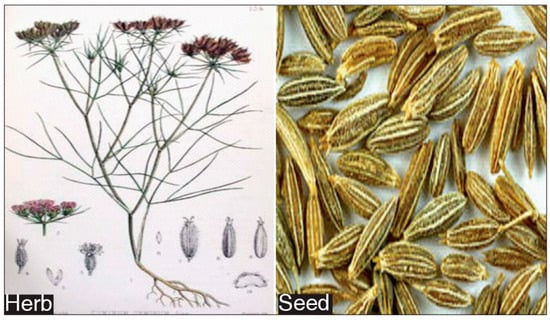
Figure 1
Open AccessArticle
Effect of Chitosan Degradation Products, Glucosamine and Chitosan Oligosaccharide, on Osteoclastic Differentiation
by
Tomoharu Takeuchi, Midori Oyama and Tomomi Hatanaka
BioTech 2024, 13(1), 6; https://doi.org/10.3390/biotech13010006 - 06 Mar 2024
Abstract
Chitosan, a natural cationic polysaccharide derived from crustaceans and shellfish shells, is known for its advantageous biological properties, including biodegradability, biocompatibility, and antibacterial activity. Chitosan and its composite materials are studied for their potential for bone tissue repair. However, the effects of chitosan
[...] Read more.
Chitosan, a natural cationic polysaccharide derived from crustaceans and shellfish shells, is known for its advantageous biological properties, including biodegradability, biocompatibility, and antibacterial activity. Chitosan and its composite materials are studied for their potential for bone tissue repair. However, the effects of chitosan degradation products, glucosamine (GlcN) and chitosan oligosaccharide (COS), on osteoclasts remain unclear. If these chitosan degradation products promote osteoclastic differentiation, careful consideration is required for the use of chitosan and related materials in bone repair applications. Here, we assessed the effects of high (500 μg/mL) and low (0.5 μg/mL) concentrations of GlcN and COS on osteoclastic differentiation in human peripheral blood mononuclear cells (PBMCs) and murine macrophage-like RAW264 cells. A tartrate-resistant acid phosphatase (TRAP) enzyme activity assay, TRAP staining, and actin staining were used to assess osteoclastic differentiation. High concentrations of GlcN and COS, but not low concentrations, suppressed macrophage colony-stimulating factor (M-CSF)- and RANKL-dependent increases in TRAP enzyme activity, TRAP-positive multinuclear osteoclast formation, and actin ring formation in PBMCs without cytotoxicity. Similar effects were observed in the RANKL-dependent osteoclastic differentiation of RAW264 cells. In conclusion, chitosan degradation products do not possess osteoclast-inducing properties, suggesting that chitosan and its composite materials can be safely used for bone tissue repair.
Full article
(This article belongs to the Section Medical Biotechnology)
►▼
Show Figures
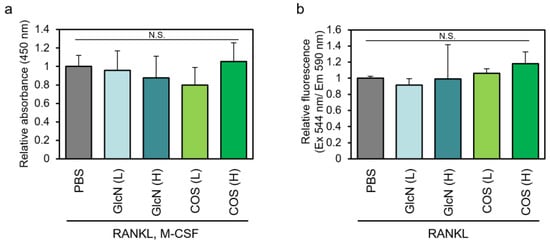
Figure 1
Open AccessArticle
Susceptibility of Tetranychus urticae to the Alkaloidal Extract of Zanthoxylum schreberi Bark: Phenotypic and Biochemical Insights for Biotechnological Exploitation
by
Ricardo A. Rincón, Daniel Rodríguez and Ericsson Coy-Barrera
BioTech 2024, 13(1), 5; https://doi.org/10.3390/biotech13010005 - 20 Feb 2024
Abstract
Tetranychus urticae Koch, a phytophagous mite, is one of the most significant crop pests globally. The primary method employed for controlling T. urticae involves chemical means, utilizing synthesized products, posing the risk of developing resistance. The urgency for novel strategies integrated into pest
[...] Read more.
Tetranychus urticae Koch, a phytophagous mite, is one of the most significant crop pests globally. The primary method employed for controlling T. urticae involves chemical means, utilizing synthesized products, posing the risk of developing resistance. The urgency for novel strategies integrated into pest management programs to combat this mite is becoming increasingly imperative. Botanical pesticides emerge as a promising tool to forestall arthropod resistance. Among these, extracts from Rutaceae plants, abundant in bioactive specialized metabolites, have demonstrated potential as insecticides and miticides. In this study, various concentrations of alkaloidal extracts sourced from the bark of Zanthoxylum schreberi J.F.Gmel. (Rutaceae) were evaluated against T. urticae adult females. Furthermore, the extract’s combination with three distinct commercial acaricides (i.e., chlorfenapyr, cyflumetofen, and abamectin) was also assessed for this mite. Chemical characterization of the extract via LC-MS allowed for the annotation of various compounds related to ten benzylisoquinoline-derived alkaloids. The extract, both alone and in combination with commercial insecticides, yielded varying responses, inducing over 40% mortality at 2% w/w, demonstrating a 90% repellency rate at the same concentration, and exerting a moderate impact on fecundity. These treatments extended beyond phenotypic responses, delving into the biochemical effects on treated T. urticae females through an exploration of the impact on four enzymes, i.e., acetylcholinesterase (AChE), glutathione S-transferase (GST), esterases (GE), and P450-like monooxygenases (PMO). Employing consensus docking studies and in vitro enzymatic evaluations, it was discovered that the Z. schreberi-derived extract and its constituents significantly affected two key enzymes, AChE and GST (IC50 < 6 µM), which were associated with the phenotypic observations of T. urticae females. The evaluation of alkaloid-rich botanicals showcases promising potential as a relevant biotechnological strategy in addressing mite-related concerns, offering a pathway toward innovative and sustainable pest management solutions.
Full article
(This article belongs to the Section Agricultural and Food Biotechnology)
►▼
Show Figures
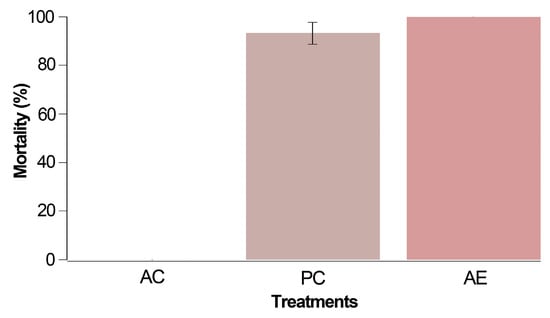
Figure 1
Open AccessArticle
Expression and Purification of Cp3GT: Structural Analysis and Modeling of a Key Plant Flavonol-3-O Glucosyltransferase from Citrus paradisi
by
Aaron S. Birchfield and Cecilia A. McIntosh
BioTech 2024, 13(1), 4; https://doi.org/10.3390/biotech13010004 - 07 Feb 2024
Abstract
►▼
Show Figures
Glycosyltransferases (GTs) are pivotal enzymes in the biosynthesis of various biological molecules. This study focuses on the scale-up, expression, and purification of a plant flavonol-specific 3-O glucosyltransferase (Cp3GT), a key enzyme from Citrus paradisi, for structural analysis and modeling. The challenges associated
[...] Read more.
Glycosyltransferases (GTs) are pivotal enzymes in the biosynthesis of various biological molecules. This study focuses on the scale-up, expression, and purification of a plant flavonol-specific 3-O glucosyltransferase (Cp3GT), a key enzyme from Citrus paradisi, for structural analysis and modeling. The challenges associated with recombinant protein production in Pichia pastoris, such as proteolytic degradation, were addressed through the optimization of culture conditions and purification processes. The purification strategy employed affinity, anion exchange, and size exclusion chromatography, leading to greater than 95% homogeneity for Cp3GT. In silico modeling, using D-I-TASSER and COFACTOR integrated with the AlphaFold2 pipeline, provided insights into the structural dynamics of Cp3GT and its ligand binding sites, offering predictions for enzyme–substrate interactions. These models were compared to experimentally derived structures, enhancing understanding of the enzyme’s functional mechanisms. The findings present a comprehensive approach to produce a highly purified Cp3GT which is suitable for crystallographic studies and to shed light on the structural basis of flavonol specificity in plant GTs. The significant implications of these results for synthetic biology and enzyme engineering in pharmaceutical applications are also considered.
Full article
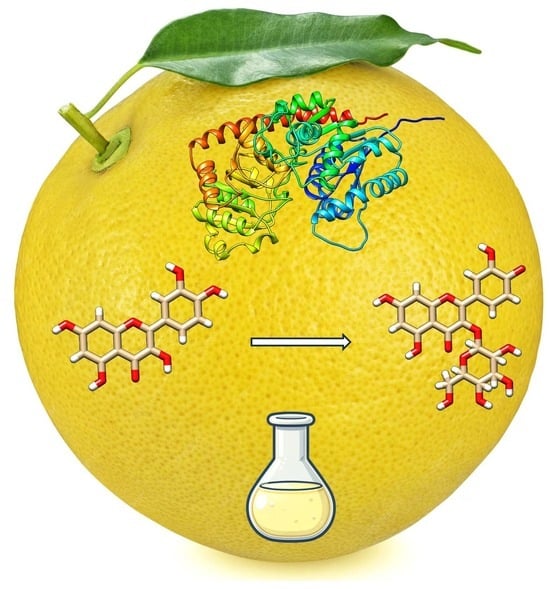
Graphical abstract
Open AccessReview
Exploring DNA Damage and Repair Mechanisms: A Review with Computational Insights
by
Jiawei Chen, Ravi Potlapalli, Heng Quan, Lingtao Chen, Ying Xie, Seyedamin Pouriyeh, Nazmus Sakib, Lichao Liu and Yixin Xie
BioTech 2024, 13(1), 3; https://doi.org/10.3390/biotech13010003 - 16 Jan 2024
Abstract
DNA damage is a critical factor contributing to genetic alterations, directly affecting human health, including developing diseases such as cancer and age-related disorders. DNA repair mechanisms play a pivotal role in safeguarding genetic integrity and preventing the onset of these ailments. Over the
[...] Read more.
DNA damage is a critical factor contributing to genetic alterations, directly affecting human health, including developing diseases such as cancer and age-related disorders. DNA repair mechanisms play a pivotal role in safeguarding genetic integrity and preventing the onset of these ailments. Over the past decade, substantial progress and pivotal discoveries have been achieved in DNA damage and repair. This comprehensive review paper consolidates research efforts, focusing on DNA repair mechanisms, computational research methods, and associated databases. Our work is a valuable resource for scientists and researchers engaged in computational DNA research, offering the latest insights into DNA-related proteins, diseases, and cutting-edge methodologies. The review addresses key questions, including the major types of DNA damage, common DNA repair mechanisms, the availability of reliable databases for DNA damage and associated diseases, and the predominant computational research methods for enzymes involved in DNA damage and repair.
Full article
(This article belongs to the Topic Advances in Bioinformatics and Computational Biology of Human Disease)
►▼
Show Figures

Figure 1
Open AccessArticle
Styrene Production in Genetically Engineered Escherichia coli in a Two-Phase Culture
by
Shuhei Noda, Ryosuke Fujiwara, Yutaro Mori, Mayumi Dainin, Tomokazu Shirai and Akihiko Kondo
BioTech 2024, 13(1), 2; https://doi.org/10.3390/biotech13010002 - 14 Jan 2024
Abstract
Styrene is an important industrial chemical. Although several studies have reported microbial styrene production, the amount of styrene produced in batch cultures can be increased. In this study, styrene was produced using genetically engineered Escherichia coli. First, we evaluated five types of
[...] Read more.
Styrene is an important industrial chemical. Although several studies have reported microbial styrene production, the amount of styrene produced in batch cultures can be increased. In this study, styrene was produced using genetically engineered Escherichia coli. First, we evaluated five types of phenylalanine ammonia lyases (PALs) from Arabidopsis thaliana (AtPAL) and Brachypodium distachyon (BdPAL) for their ability to produce trans-cinnamic acid (Cin), a styrene precursor. AtPAL2-expressing E. coli produced approximately 700 mg/L of Cin and we found that BdPALs could convert Cin into styrene. To assess styrene production, we constructed an E. coli strain that co-expressed AtPAL2 and ferulic acid decarboxylase from Saccharomyces cerevisiae. After a biphasic culture with oleyl alcohol, styrene production and yield from glucose were 3.1 g/L and 26.7% (mol/mol), respectively, which, to the best of our knowledge, are the highest values obtained in batch cultivation. Thus, this strain can be applied to the large–scale industrial production of styrene.
Full article
(This article belongs to the Topic Microbial Biotechnology Products and Biocatalysis Processes for a Sustainable Bioeconomy)
►▼
Show Figures
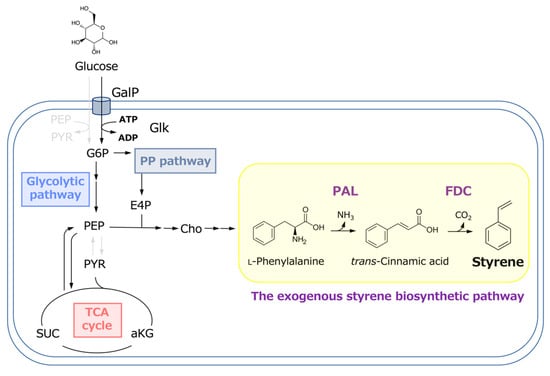
Figure 1
Open AccessReview
Gene Therapy for Genetic Syndromes: Understanding the Current State to Guide Future Care
by
Marian L. Henderson, Jacob K. Zieba, Xiaopeng Li, Daniel B. Campbell, Michael R. Williams, Daniel L. Vogt, Caleb P. Bupp, Yvonne M. Edgerly, Surender Rajasekaran, Nicholas L. Hartog, Jeremy W. Prokop and Jena M. Krueger
BioTech 2024, 13(1), 1; https://doi.org/10.3390/biotech13010001 - 03 Jan 2024
Cited by 2
Abstract
Gene therapy holds promise as a life-changing option for individuals with genetic variants that give rise to disease. FDA-approved gene therapies for Spinal Muscular Atrophy (SMA), cerebral adrenoleukodystrophy, β-Thalassemia, hemophilia A/B, retinal dystrophy, and Duchenne Muscular Dystrophy have generated buzz around the ability
[...] Read more.
Gene therapy holds promise as a life-changing option for individuals with genetic variants that give rise to disease. FDA-approved gene therapies for Spinal Muscular Atrophy (SMA), cerebral adrenoleukodystrophy, β-Thalassemia, hemophilia A/B, retinal dystrophy, and Duchenne Muscular Dystrophy have generated buzz around the ability to change the course of genetic syndromes. However, this excitement risks over-expansion into areas of genetic disease that may not fit the current state of gene therapy. While in situ (targeted to an area) and ex vivo (removal of cells, delivery, and administration of cells) approaches show promise, they have a limited target ability. Broader in vivo gene therapy trials have shown various continued challenges, including immune response, use of immune suppressants correlating to secondary infections, unknown outcomes of overexpression, and challenges in driving tissue-specific corrections. Viral delivery systems can be associated with adverse outcomes such as hepatotoxicity and lethality if uncontrolled. In some cases, these risks are far outweighed by the potentially lethal syndromes for which these systems are being developed. Therefore, it is critical to evaluate the field of genetic diseases to perform cost–benefit analyses for gene therapy. In this work, we present the current state while setting forth tools and resources to guide informed directions to avoid foreseeable issues in gene therapy that could prevent the field from continued success.
Full article
(This article belongs to the Special Issue Biotechnology and Bioethics)
►▼
Show Figures
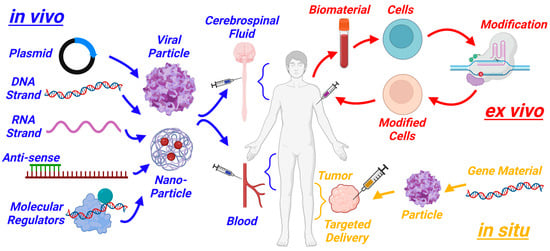
Figure 1
Open AccessArticle
Biocatalysts Based on Immobilized Lipases for the Production of Fatty Acid Ethyl Esters: Enhancement of Activity through Ionic Additives and Ion Exchange Supports
by
Juan S. Pardo-Tamayo, Sebastián Arteaga-Collazos, Laura C. Domínguez-Hoyos and César A. Godoy
BioTech 2023, 12(4), 67; https://doi.org/10.3390/biotech12040067 - 18 Dec 2023
Abstract
Ionic additives affect the structure, activity and stability of lipases, which allow for solving common application challenges, such as preventing the formation of protein aggregates or strengthening enzyme–support binding, preventing their desorption in organic media. This work aimed to design a biocatalyst, based
[...] Read more.
Ionic additives affect the structure, activity and stability of lipases, which allow for solving common application challenges, such as preventing the formation of protein aggregates or strengthening enzyme–support binding, preventing their desorption in organic media. This work aimed to design a biocatalyst, based on lipase improved by the addition of ionic additives, applicable in the production of ethyl esters of fatty acids (EE). Industrial enzymes from Thermomyces lanuginosus (TLL), Rhizomucor miehei (RML), Candida antárctica B (CALB) and Lecitase®, immobilized in commercial supports like Lewatit®, Purolite® and Q-Sepharose®, were tested. The best combination was achieved by immobilizing lipase TLL onto Q-Sepharose® as it surpassed, in terms of %EE (70.1%), the commercial biocatalyst Novozyme® 435 (52.7%) and was similar to that of Lipozyme TL IM (71.3%). Hence, the impact of ionic additives like polymers and surfactants on both free and immobilized TLL on Q-Sepharose® was assessed. It was observed that, when immobilized, in the presence of sodium dodecyl sulfate (SDS), the TLL derivative exhibited a significantly higher activity, with a 93-fold increase (1.02 IU), compared to the free enzyme under identical conditions (0.011 IU). In fatty acids ethyl esters synthesis, Q-SDS-TLL novel derivatives achieved results similar to commercial biocatalysts using up to ~82 times less enzyme (1 mg/g). This creates an opportunity to develop biocatalysts with reduced enzyme consumption, a factor often associated with higher production costs. Such advancements would ease their integration into the biodiesel industry, fostering a greener production approach compared to conventional methods.
Full article
(This article belongs to the Topic Microbial Biotechnology Products and Biocatalysis Processes for a Sustainable Bioeconomy)
►▼
Show Figures

Figure 1
Open AccessArticle
Gibberellin-Producing Bacteria Isolated from Coastal Soil Enhance Seed Germination of Mallow and Broccoli Plants under Saline Conditions
by
Ji-In Woo, Md. Injamum-Ul-Hoque, Nazree Zainurin, Shifa Shaffique, Eun-Hae Kwon, Ho-Jun Gam, Jin Ryeol Jeon, In-Jung Lee, Gil-Jae Joo and Sang-Mo Kang
BioTech 2023, 12(4), 66; https://doi.org/10.3390/biotech12040066 - 11 Dec 2023
Abstract
Salinity hinders plant growth, posing a substantial challenge to sustainable agricultural yield maintenance. The application of plant growth-promoting rhizobacteria (PGPR) offers an emerging strategy to mitigate the detrimental effects of high salinity levels. This study aimed to isolate and identify gibberellin-producing bacteria and
[...] Read more.
Salinity hinders plant growth, posing a substantial challenge to sustainable agricultural yield maintenance. The application of plant growth-promoting rhizobacteria (PGPR) offers an emerging strategy to mitigate the detrimental effects of high salinity levels. This study aimed to isolate and identify gibberellin-producing bacteria and their impact on the seed germination of Malva verticillata (mallow) and Brassica oleracea var. italica (broccoli) under salt stress. In this study, seven bacterial isolates (KW01, KW02, KW03, KW04, KW05, KW06, and KW07) were used to assess their capacity for producing various growth-promoting traits and their tolerance to varying amounts of salinity (100 mM and 150 Mm NaCl). The findings revealed that KW05 and KW07 isolates outperformed other isolates in synthesizing indole-3-acetic acid, siderophores, and exopolysaccharides and in solubilizing phosphates. These isolates also enhanced phosphatase activity and antioxidant levels, including superoxide dismutase and catalase. Both KW05 and KW07 isolate highlight the growth-promoting effects of gibberellin by enhancing of growth parameters of Waito-C rice. Further, gas chromatography–mass spectrometry validation confirmed the ability of KW05 and KW07 to produce gibberellins (GAs), including GA1, GA3, GA4, and GA7. Seed germination metrics were enhanced due to the inoculation of KW05 and KW07. Moreover, inoculation with KW05 increased the fresh weight (FW) (7.82%) and total length (38.61%) of mallow under salt stress. Inoculation with KW07 increased the FW (32.04%) and shoot length of mallow under salt stress. A single inoculation of these two isolates increased broccoli plants’ FW and shoot length under salt stress. Gibberellin-producing bacteria helps in plant growth promotion by improving salt tolerance by stimulating root elongation and facilitating enhanced absorption of water and nutrient uptake in salty environments. Based on these findings, they can play a role in boosting agricultural yield in salt-affected areas, which would help to ensure the long-term viability of agriculture in coastal regions.
Full article
(This article belongs to the Section Agricultural and Food Biotechnology)
►▼
Show Figures
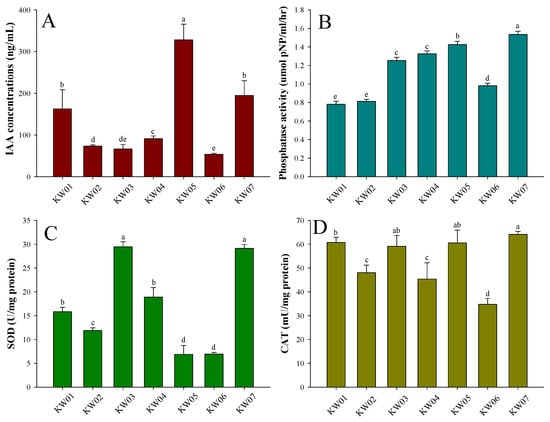
Figure 1
Open AccessArticle
Detection and Characterization of Electrogenic Bacteria from Soils
by
Ana Rumora, Liliana Hopkins, Kayla Yim, Melissa F. Baykus, Luisa Martinez and Luis Jimenez
BioTech 2023, 12(4), 65; https://doi.org/10.3390/biotech12040065 - 02 Dec 2023
Abstract
Soil microbial fuel cells (SMFCs) are bioelectrical devices powered by the oxidation of organic and inorganic compounds due to microbial activity. Seven soils were randomly selected from Bergen Community College or areas nearby, located in the state of New Jersey, USA, were used
[...] Read more.
Soil microbial fuel cells (SMFCs) are bioelectrical devices powered by the oxidation of organic and inorganic compounds due to microbial activity. Seven soils were randomly selected from Bergen Community College or areas nearby, located in the state of New Jersey, USA, were used to screen for the presence of electrogenic bacteria. SMFCs were incubated at 35–37 °C. Electricity generation and electrogenic bacteria were determined using an application developed for cellular phones. Of the seven samples, five generated electricity and enriched electrogenic bacteria. Average electrical output for the seven SMFCs was 155 microwatts with the start-up time ranging from 1 to 11 days. The highest output and electrogenic bacterial numbers were found with SMFC-B1 with 143 microwatts and 2.99 × 109 electrogenic bacteria after 15 days. Optimal electrical output and electrogenic bacterial numbers ranged from 1 to 21 days. Microbial DNA was extracted from the top and bottom of the anode of SMFC-B1 using the ZR Soil Microbe DNA MiniPrep Protocol followed by PCR amplification of 16S rRNA V3-V4 region. Next-generation sequencing of 16S rRNA genes generated an average of 58 k sequences. BLAST analysis of the anode bacterial community in SMFC-B1 demonstrated that the predominant bacterial phylum was Bacillota of the class Clostridia (50%). However, bacteria belonging to the phylum Pseudomonadota (15%) such as Magnetospirillum sp. and Methylocaldum gracile were also part of the predominant electrogenic bacterial community in the anode. Unidentified uncultured bacteria accounted for 35% of the predominant bacterial community. Bioelectrical devices such as MFCs provide sustainable and clean alternatives to future applications for electricity generation, waste treatment, and biosensors.
Full article
(This article belongs to the Topic Microbial Biotechnology Products and Biocatalysis Processes for a Sustainable Bioeconomy)
►▼
Show Figures
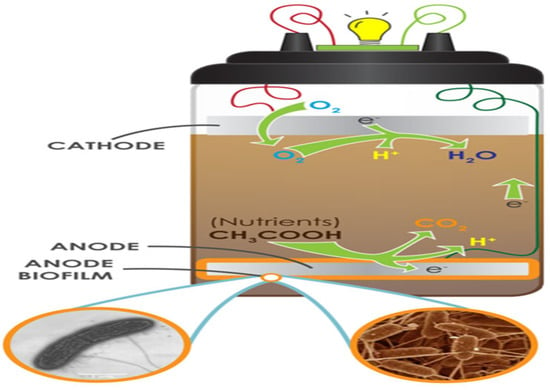
Figure 1
Open AccessReview
Fungicide Resistance in Botrytis spp. and Regional Strategies for Its Management in Northern European Strawberry Production
by
Roland W. S. Weber and Antonios Petridis
BioTech 2023, 12(4), 64; https://doi.org/10.3390/biotech12040064 - 19 Nov 2023
Abstract
►▼
Show Figures
Grey mould, caused by Botrytis cinerea and other Botrytis spp., is a major cause of fruit rot in strawberries and other fruit crops worldwide. Repeated fungicide applications are essential in order to secure harvests. However, resistance to all currently registered single-site fungicides is
[...] Read more.
Grey mould, caused by Botrytis cinerea and other Botrytis spp., is a major cause of fruit rot in strawberries and other fruit crops worldwide. Repeated fungicide applications are essential in order to secure harvests. However, resistance to all currently registered single-site fungicides is widespread. The rising importance of strains with multiple resistance to most or all fungicides is of particular concern. These strains may be introduced into fields via contaminated nursery plants and/or by immigration from adjacent plots. On the basis of research conducted in northern German and Danish strawberry production, a concept to manage fungicide resistance under northern European conditions has been developed and put into regional strawberry production practice. This principally includes the testing of nursery plants for fungicide-resistant Botrytis strains prior to planting; the restricted and specific use of fungicides at flowering in the production fields, taking account of the resistance spectrum within the local Botrytis population; and crop sanitation measures such as the removal of rotting fruits at the beginning of harvest. Further options such as protected cultivation, reduced fertilisation and biological control are also discussed. The practical implementation of such a strategy in northern Germany and Denmark has been shown to reduce the occurrence of multi-resistant strains to a tolerable steady-state level.
Full article
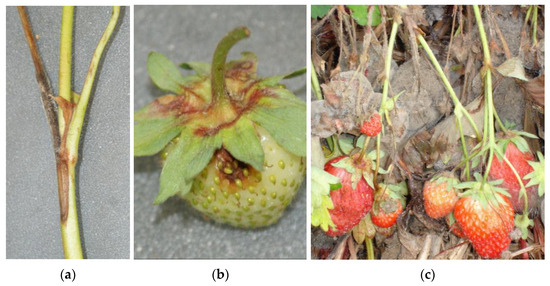
Figure 1
Open AccessReview
The Controversial Nature of Some Non-Starter Lactic Acid Bacteria Actively Participating in Cheese Ripening
by
Svetoslav G. Dimov
BioTech 2023, 12(4), 63; https://doi.org/10.3390/biotech12040063 - 09 Nov 2023
Abstract
This mini review deals with some controversial non-starter lactic acid bacteria (NSLAB) species known to be both human and animal pathogens but also health-promoting and probiotic. The focus is on Lactococcus garvieae, two Streptococcus species (S. uberis and S. parauberis),
[...] Read more.
This mini review deals with some controversial non-starter lactic acid bacteria (NSLAB) species known to be both human and animal pathogens but also health-promoting and probiotic. The focus is on Lactococcus garvieae, two Streptococcus species (S. uberis and S. parauberis), four Weissella species (W. hellenica, W. confusa, W. paramesenteroides, and W. cibaria), and Mammalicoccus sciuri, which worldwide, are often found within the microbiotas of different kinds of cheese, mainly traditional artisanal cheeses made from raw milk and/or relying on environmental bacteria for their ripening. Based on literature data, the virulence and health-promoting effects of these bacteria are examined, and some of the mechanisms of these actions are reviewed. Additionally, their possible roles in cheese ripening are also discussed. The analysis of the literature data available so far showed that, in general, the pathogenic and the beneficial strains, despite belonging to the same species, show somewhat different genetic constitutions. Yet, when the safety of a given strain is assessed, genomic analysis on its own is not enough, and a polyphasic approach including additional physiological and functional tests is needed.
Full article
Open AccessArticle
Tracking of Systemic Lupus Erythematosus (SLE) Longitudinally Using Biosensor and Patient-Reported Data: A Report on the Fully Decentralized Mobile Study to Measure and Predict Lupus Disease Activity Using Digital Signals—The OASIS Study
by
Eldon R. Jupe, Gerald H. Lushington, Mohan Purushothaman, Fabricio Pautasso, Georg Armstrong, Arif Sorathia, Jessica Crawley, Vijay R. Nadipelli, Bernard Rubin, Ryan Newhardt, Melissa E. Munroe and Brett Adelman
BioTech 2023, 12(4), 62; https://doi.org/10.3390/biotech12040062 - 09 Nov 2023
Cited by 1
Abstract
(1) Objective: Systemic lupus erythematosus (SLE) is a complex disease involving immune dysregulation, episodic flares, and poor quality of life (QOL). For a decentralized digital study of SLE patients, machine learning was used to assess patient-reported outcomes (PROs), QOL, and biometric data for
[...] Read more.
(1) Objective: Systemic lupus erythematosus (SLE) is a complex disease involving immune dysregulation, episodic flares, and poor quality of life (QOL). For a decentralized digital study of SLE patients, machine learning was used to assess patient-reported outcomes (PROs), QOL, and biometric data for predicting possible disease flares. (2) Methods: Participants were recruited from the LupusCorner online community. Adults self-reporting an SLE diagnosis were consented and given a mobile application to record patient profile (PP), PRO, and QOL metrics, and enlisted participants received smartwatches for digital biometric monitoring. The resulting data were profiled using feature selection and classification algorithms. (3) Results: 550 participants completed digital surveys, 144 (26%) agreed to wear smartwatches, and medical records (MRs) were obtained for 68. Mining of PP, PRO, QOL, and biometric data yielded a 26-feature model for classifying participants according to MR-identified disease flare risk. ROC curves significantly distinguished true from false positives (ten-fold cross-validation: p < 0.00023; five-fold: p < 0.00022). A 25-feature Bayesian model enabled time-variant prediction of participant-reported possible flares (P(true) > 0.85, p < 0.001; P(nonflare) > 0.83, p < 0.0001). (4) Conclusions: Regular profiling of patient well-being and biometric activity may support proactive screening for circumstances warranting clinical assessment.
Full article
(This article belongs to the Special Issue Feature Papers in Computational Biology)
►▼
Show Figures

Figure 1
Open AccessHypothesis
Bacterial Proteases as Potentially Exploitable Modulators of SARS-CoV-2 Infection: Logic from the Literature, Informatics, and Inspiration from the Dog
by
Gerald H. Lushington, Annika Linde and Tonatiuh Melgarejo
BioTech 2023, 12(4), 61; https://doi.org/10.3390/biotech12040061 - 30 Oct 2023
Abstract
(1) Background: The COVID-19 pandemic left many intriguing mysteries. Retrospective vulnerability trends tie as strongly to odd demographics as to exposure profiles, genetics, health, or prior medical history. This article documents the importance of nasal microbiome profiles in distinguishing infection rate trends among
[...] Read more.
(1) Background: The COVID-19 pandemic left many intriguing mysteries. Retrospective vulnerability trends tie as strongly to odd demographics as to exposure profiles, genetics, health, or prior medical history. This article documents the importance of nasal microbiome profiles in distinguishing infection rate trends among differentially affected subgroups. (2) Hypothesis: From a detailed literature survey, microbiome profiling experiments, bioinformatics, and molecular simulations, we propose that specific commensal bacterial species in the Pseudomonadales genus confer protection against SARS-CoV-2 infections by expressing proteases that may interfere with the proteolytic priming of the Spike protein. (3) Evidence: Various reports have found elevated Moraxella fractions in the nasal microbiomes of subpopulations with higher resistance to COVID-19 (e.g., adolescents, COVID-19-resistant children, people with strong dietary diversity, and omnivorous canines) and less abundant ones in vulnerable subsets (the elderly, people with narrower diets, carnivorous cats and foxes), along with bioinformatic evidence that Moraxella bacteria express proteases with notable homology to human TMPRSS2. Simulations suggest that these proteases may proteolyze the SARS-CoV-2 spike protein in a manner that interferes with TMPRSS2 priming.
Full article
(This article belongs to the Topic Advances in Bioinformatics and Computational Biology of Human Disease)
►▼
Show Figures
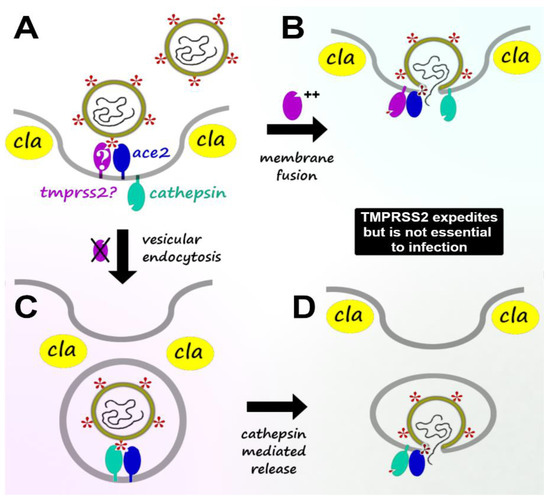
Figure 1
Open AccessArticle
Human TIMP1 Is a Growth Factor That Improves Oocyte Developmental Competence
by
Yolanda Manríquez-Treviño, Blanca Sánchez-Ramírez, Juan Alberto Grado-Ahuir, Beatriz Castro-Valenzuela, Carmen González-Horta and M.Eduviges Burrola-Barraza
BioTech 2023, 12(4), 60; https://doi.org/10.3390/biotech12040060 - 08 Oct 2023
Abstract
Oocyte developmental competence is the ability of a mature oocyte to be fertilized and subsequently support embryonic development. Such competence is gained during folliculogenesis and is facilitated by the bidirectional communication into a compacted cumulus–oocyte complex (COC). Human tissue inhibitor of metalloproteinases-1 (TIMP1)
[...] Read more.
Oocyte developmental competence is the ability of a mature oocyte to be fertilized and subsequently support embryonic development. Such competence is gained during folliculogenesis and is facilitated by the bidirectional communication into a compacted cumulus–oocyte complex (COC). Human tissue inhibitor of metalloproteinases-1 (TIMP1) participates in biological processes, including cell growth, differentiation, and apoptosis. This study aimed to evaluate the influence of TIMP1 as a growth factor on the in vitro maturation (IVM) culture of bovine COCs to improve oocyte developmental competence. All TIMP1 treatments (50, 100, and 150 ng/mL) favored the COCs’ compaction structure (p < 0.05). TIMP1 at 150 ng/mL produced more oocytes in metaphase II compared to the other treatments (p < 0.05). The 150 ng/mL TIMP1 generated oocytes with the most (p < 0.05) cortical granules below the plasma membrane (pattern I). In a parthenogenesis assay, oocyte IVM in 50 ng/mL of TIMP1 produced the most blastocyst compared to the other treatments (p < 0.05). The Principal Component Analysis (PCA) showed that 50 ng/mL of TIMP1 was the best condition to develop oocyte competence because it was associated with the COC compact and cortical granule pattern I. TIMP1 influences the development of oocyte competence when added to the IVM culture medium of COCs.
Full article
(This article belongs to the Section Agricultural and Food Biotechnology)
►▼
Show Figures

Figure 1
Highly Accessed Articles
Latest Books
E-Mail Alert
News
Topics
Topic in
Applied Sciences, BioTech, Catalysts, Processes
Microbial Biotechnology Products and Biocatalysis Processes for a Sustainable Bioeconomy
Topic Editors: Dirk Tischler, Diogo Neves Proença, Paula Maria Vasconcelos MoraisDeadline: 30 September 2024

Conferences
Special Issues
Special Issue in
BioTech
Natural Antioxidants: Determination in Food and Nutraceuticals and Implications on Human Health
Guest Editor: Gregorio PeronDeadline: 31 May 2024
Special Issue in
BioTech
Progress on the Production, Purification and Applications of Microbial Enzymes
Guest Editors: Ana Paula Tavares, Mafalda R. AlmeidaDeadline: 30 September 2024
Special Issue in
BioTech
Progress in Biomarker Research
Guest Editor: Vehary SakanyanDeadline: 27 November 2024




